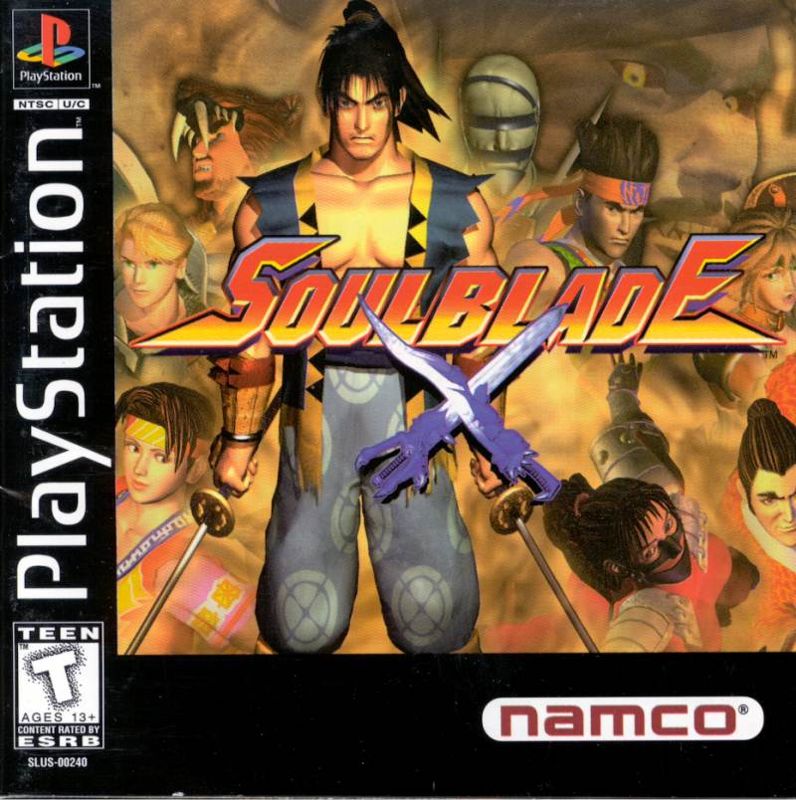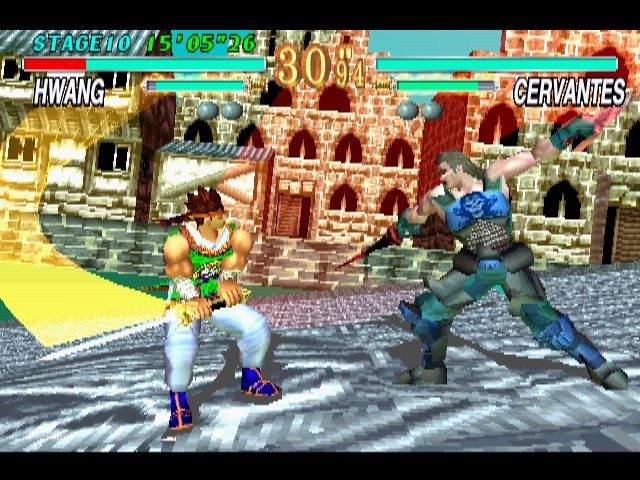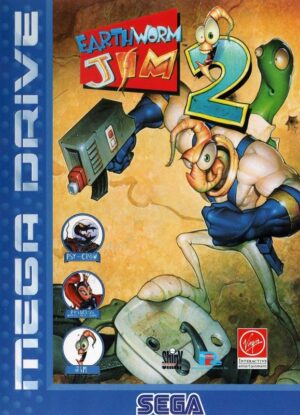Retro Replay Review
Gameplay
Soul Blade delivers an accessible yet deep fighting system that balances simplicity with strategic depth. Unlike many 2D fighters of its era, this title embraces full 3D movement, allowing players to sidestep attacks and circle around opponents to find openings. Each character wields a distinct weapon—ranging from slender rapiers to heavy greatswords—so mastering the timing and reach of every blade is essential for victory.
(HEY YOU!! We hope you enjoy! We try not to run ads. So basically, this is a very expensive hobby running this site. Please consider joining us for updates, forums, and more. Network w/ us to make some cash or friends while retro gaming, and you can win some free retro games for posting. Okay, carry on 👍)
The roster of twelve fighters (ten immediately available plus two unlockable) offers ample variety in playstyles. Standard modes let you explore combo chains, parries, and weapon durability mechanics, encouraging you to adapt your tactics on the fly. Hidden characters can only be selected in Arcade and Versus modes, adding an extra layer of mystery for completionists who relish discovering every secret.
Multiple modes keep the action fresh beyond head-to-head battles. If you’re chasing high scores, Time Attack and Survival modes test your endurance and efficiency. Team Battle mode lets you string together a lineup of fighters and tackle opponents in succession, while Story Mode—which is unique to the home version—unveils character-specific challenges and lore. Unlockable weapons in Story Mode further diversify your arsenal, as each weapon boasts different length, damage, and durability stats.
Graphics
For its time, Soul Blade’s visuals were nothing short of groundbreaking. Polygonal character models are crisp, with smooth animations that bring each weapon clash to life. The fluidity of movement—especially during dramatic sidesteps and aerial combos—showcases Namco’s commitment to making a truly three-dimensional fighter that stands out in arcades and on consoles alike.
The game’s CGI intro is a particularly memorable highlight. Rendered with high detail, it sets the tone by dramatizing the demonic power of the Soul Edge blade. This cinematic opener seamlessly transitions you into the in-game engine, demonstrating how faithfully the polygonal models replicate the same designs from the cutscene.
A variety of detailed stages—from misty Japanese temples to windswept European courtyards—provide visually engaging backdrops for your duels. Dynamic lighting and elemental effects (sparks, fire, and gusts of wind) add intensity to each confrontation. Even with the hardware limitations of the era, Soul Blade manages to create environments that feel alive and responsive to the ongoing conflict.
Story
The narrative framework of Soul Blade revolves around the legendary demon sword Soul Edge, which surfaced in the 16th century and corrupted all who sought its power. Warriors from America, Europe, and Japan converge on this unholy blade, each driven by personal motivations—some noble, some sinister. This global treasure hunt provides a rich tapestry of backgrounds and rivalries that fuel every duel.
Story Mode unravels these motivations through an ancient book aesthetic, complete with parchment textures and ornate borders. Each character’s tale is divided into chapters that play out as cinematic sequences and in-engine battles. By progressing through these segments, you not only witness key plot points but also unlock new weapons and artwork that shed further light on individual backstories.
Beyond pure exposition, the narrative impacts gameplay. Certain weapons you earn in Story Mode alter attack reach and durability, so choosing which path to pursue becomes as much a mechanical decision as a thematic one. This integration of story and combat elevates Soul Blade above many contemporaries, ensuring that narrative progression feels rewarding both emotionally and tactically.
Overall Experience
Soul Blade represents a vital evolutionary step in weapon-based fighters, setting the stage for its acclaimed sequel, SoulCalibur. Its blend of three-dimensional movement, weapon durability, and character-driven storylines creates an experience that remains engaging decades later. Whether you’re revisiting it for nostalgia or discovering it for the first time, the game’s core systems hold up remarkably well.
The variety of modes and unlockables extends replay value significantly. Casual players can dip into Versus mode for quick bouts, while dedicated fans will find countless hours of challenge in Story, Survival, and Time Attack modes. Discovering hidden characters and rare weapons adds a rewarding layer of exploration that keeps you invested long after the credits roll.
In the context of fighting-game history, Soul Blade stands out as a bold experiment that successfully merged cinematic flair with tight mechanics. Its successors may have refined the formula, but this original installment laid the groundwork for what would become one of the genre’s most beloved franchises. For newcomers and veterans alike, Soul Blade remains a compelling purchase that combines visual spectacle, robust gameplay, and a memorable mythos.
 Retro Replay Retro Replay gaming reviews, news, emulation, geek stuff and more!
Retro Replay Retro Replay gaming reviews, news, emulation, geek stuff and more!









Reviews
There are no reviews yet.